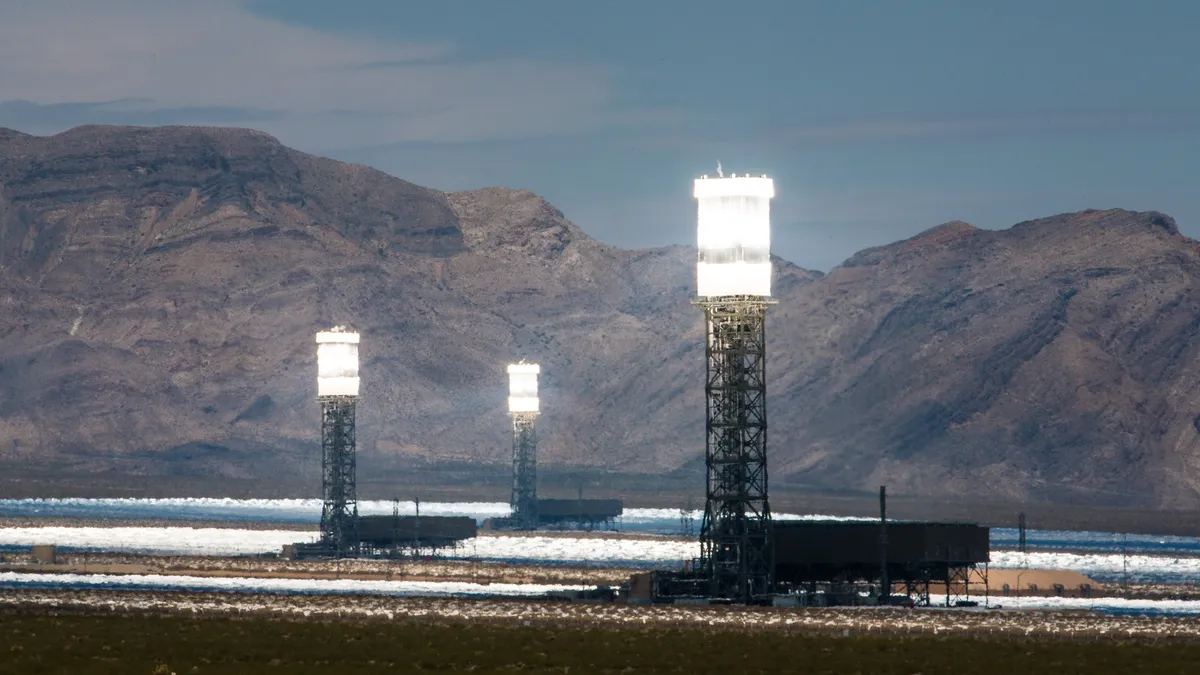Dive Brief:
- After a decade-long lull, the Department of Energy (DOE) is reviewing 66 loan applications totaling $53.6 billion for potential advanced nuclear, transmission line, electric vehicle-related (EV) and other cutting-edge energy projects, according to Jigar Shah, director of DOE's Loan Programs Office.
- Another 40 loan requests are in the first-draft stage, Shah said Tuesday during a webinar hosted by the Bipartisan Policy Center, a Washington, D.C.-based think tank. "We're open for business," Shah said.
- The loan program will play a small, but key part in efforts to decarbonize the economy, according to Brett Feldman, a Guidehouse Insights research director. "You need hundreds of billions of dollars, if not trillions of investment," he said Wednesday. "It's not like this is going be the silver bullet, but it's important to get the early stage debt and loan guarantees to get things off the ground."
Dive Insight:
The DOE loan office's revival comes as the Biden administration aims to set the U.S. on a path to getting emissions-free electricity by 2035. The office helps finance innovative energy projects, but has been little used in the last decade.
Since it was started, the office has issued about $35 billion in loans and loan guarantees to companies like Tesla, NRG Energy and Solyndra, a solar company that went bankrupt, hurting the loan program's reputation.
Shah — the co-founder and former president of Generate Capital, an investment firm for sustainable infrastructure, and founder and former CEO of SunEdison, a renewable energy company — was hired to revitalize the loan office, which has about $42 billion in loan capacity.
"We spent a lot of this year really shoring up the foundation of the office, and refreshing all of our assumptions and making sure that they were true, and we had full support from throughout the government so that we weren't leading the applicants astray and abusing their good grace," Shah said.
Through the loan office, Shah said he aims to spur $100 billion in private sector commitments in sectors that will help the United States slash carbon dioxide emissions. Ideally, Shah said he would like the office to issue at least $2 billion in loans for each key emerging sector, such as battery recycling, "green" hydrogen and carbon capture. So far, the office is reviewing at least $2 billion in applications in 11 different sectors, according to Shah.
The office is reviewing about $11.8 billion in applications for nuclear projects, according to Shah. "Nuclear is back and we've got three or four new nuclear plants that want money to build next generation, small modular reactors," he said.
Carbon capture and sequestration companies are seeking about $8 billion in loans, he said.
The office is considering "several" billion in EV-related and "virtual power plant" loans as well as loans for several transmission projects, according to Shah.
The recent bipartisan infrastructure bill included $8 billion in funding for four hydrogen hubs, but DOE’s Office of Clean Energy Demonstrations (OCED) may take a different approach to distributing that money, Shah said.
Instead of creating hubs, some companies are asking OCED to use the funding to set a floor price for hydrogen, according to Shah, who said the loan office is advising OCED on the issue.
The companies think they can sell low-carbon hydrogen for $7 a kilogram, but they can't prove it because no one is willing to enter into a long-term contract at that price, Shah said. But, if OCED guaranteed that price, the companies would be able to get commercial debt for their projects, he said. If the companies enter into contracts to sell hydrogen at or above the floor price, OCED wouldn't pay them anything, but if the contracts were below the floor, DOE would make up the difference, according to Shah.
The private sector will play the main role in the energy transition and the government's role is to help steer the shift, according to Shah.
"They're priming the pump and it's really the private sector that's going to be the bulk of it," Guidehouse's Feldman said. "You can't rely on the government to fund 100% of it. So I think [Shah] wants to show that they can do the diligence, they can take some of the risk out for other investors and then other people will be more willing to contribute."
Correction: This article previously erred in identifying the DOE office that will distribute the hydrogen hub funding. It's the Office of Clean Energy Demonstrations.














